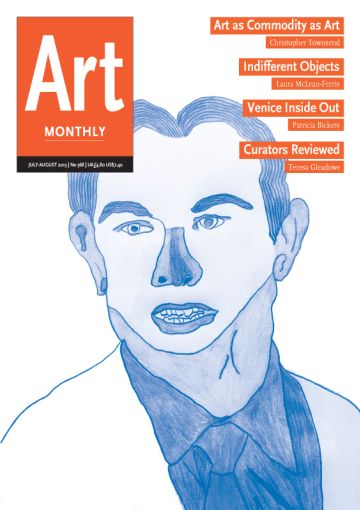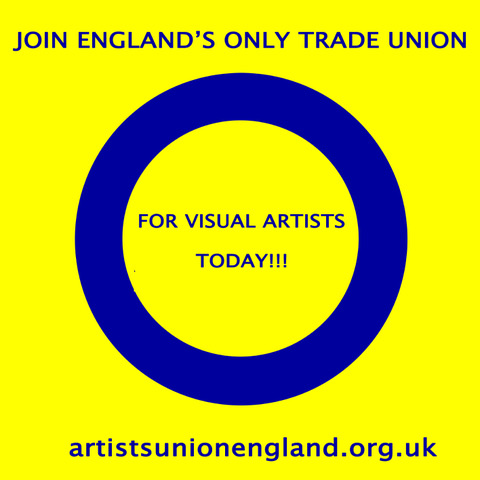Feature
Indifferent Objects
In our obsession with objects what has happened to the subject asks Laura McLean-Ferris
What’s going on with the objects? Something’s up with them. Or is something up with us? They have been making their presence felt lately. Like Tippi Hedren’s character in The Birds, 1963, we have just been noticing them a lot more, as though these once well-behaved entities might suddenly have different attitudes. Objects have a different glamour to them in the current moment and, as such, they are everywhere in art, and everywhere presented in a way that asserts their status as ‘objects’. They spin and dance and talk in film and video, telling stories – think of Elizabeth Price’s User Group Disco, 2009, or Duncan Campbell’s It for Others, 2013, seen at this year’s Venice Biennale. In Jeremy Deller’s ‘English Magic’, his pavilion in Venice, visitors were offered the chance to handle Neolithic hand axes in order to feel some of their ancient power – history or magic embedded in the object. Mark Leckey’s contribution to ‘The Encyclopedic Palace’, the main Biennale exhibition, involved 3D scanning various objects in his curated exhibition ‘The Universal Addressability of Dumb Things’ that was concurrently on view at Nottingham Contemporary. Objects such as rocks, stones and carvings glower meaningfully in vitrines, commonly appropriated as readymades. We listen to the sounds of objects in audio recordings and we analyse them with machines and we look and look and look at them. Ancient objects from other civilisations are particularly prone to such treatment. Is this because our civilisation appears to be changing so quickly and is built on foundations that look shakier than ever? Perhaps we believe that we can learn something from those that have gone before and that have left their objects behind for us as clues.
And then there is the philosophy. Increasingly we hear mention in art circles of Speculative Realism or Object Oriented Ontology (OOO) as new directions in thought. The latter, in particular, suggests that everything can be thought of as an object. From multinational companies to Harry Potter to songs to lemons, everything is appraised within the same flattened system and is reducible to the status of object. Everything is thought of on the same level as everything else and subjectivity is discarded in favour of a form of ‘new realism’. Human beings, this thinking suggests, are no more special than any other kind of object.
That such a mode of thinking emerges at this highly digitised, technologised moment is no coincidence. Indeed, OOO takes its name from a computer programming methodology, Object Oriented Programming, which, to avoid getting too deeply into jargon, treats multiple sets of programming operations or concepts as a single object – languages utilising the principles of OOP include Objective-C, JavaScript and Python, which power the digital production/consumption cycle of the internet: these are some of the languages that drive your Macs and iPhones, your webservers and websites. Since languages create forms of thought, are the principles behind OOP allowing us to think of Tesco as an object? Can programming languages be so unethical? Might they have as much of a direct effect on the way that we think as verbal or written languages do? So forget human, embodied experience: whether you are black or white, able bodied or disabled, man or woman. It doesn’t matter anyway – the world, an object too, goes on without you. The return of the real – again!
Aside from some really serious problems regarding difference, what has happened to agency? Where can we step in and change things or protest in a system of objects? Here is what I think: objects don’t care. Care is the responsibility of humans, and even in an era of disembodiment we still have bodies, and these bodies and their experiences remain important – now perhaps more than ever. So it is for these reasons that I find it difficult to accept that these object-based systems, or what I understand of them currently, point the way forward. So what is it that is so intriguing, then, about this transformed status of objects, and the way they are beginning to appear everywhere in art? One of the things I find most interesting in their treatment by artists is not a mystical or fetishistic imagining of the object’s reality, but the way in which it seems that several artists are using objects to get close to moments of historical change, and in particular to moments of legislative change or legal processes, particularly as they pertain to the relations between objects and humans and how these are negotiated. The law is a foundation of any society, but it is difficult to feel that this is the case, exactly, until you actually come up against it. Objects, however, might offer moments in which legal and historical changes can be felt, and in which their impacts on bodies and minds can be registered.
Many of the installations by the Vietnamese-Danish artist Danh Vo employ historical objects as readymades, for example. Vo was motivated to acquire three chandeliers from the ballroom of the Hotel Majestic in Paris because these very objects were hanging from the ceiling in the room where the Paris Peace Accords were signed in 1973, an act which was meant to end the war in Vietnam. Variously the artist has hung the chandeliers from the ceilings of galleries, or dismantled them and laid them out piece by piece – a fragmentary collection of crystals that speaks to the shattered subject, the bodies displaced by the war, the effect of the objects on the processes that happen around them. In his exhibition at Musée d’Art Moderne de la ville de Paris, each chandelier was treated differently: one hung complete, one divided in two and one scattered around a dark room, each bulb filament lit as though a constellation of stars. Vo has also used a selection of items from the estate of Robert McNamara in his installations, including McNamara’s ceremonially engraved pen, which was used to sign the Gulf of Tonkin resolution, paving the way for the US military intervention in Vietnam. The artist also regularly uses his family and the objects that have gathered around them in his work: he has created a headstone for his grandmother based on the four objects – a crucifx, a washing machine, a casino pass and a fridge – that she was given by a relief programme when she arrived in Germany as a refugee from Vietnam. Vo’s father, on the other hand, is called on as a calligrapher to execute many of his text pieces drawing up contracts which bind Phung Vo to the creation of certain works: he is obliged to produce certain letters on request until the time of his death, for instance. Friends of the artist are not exempt from this treatment: for a work entitled Vo Rocasco Rasmussen, 2003-, he married several of his friends in order legally to take their names before immediately divorcing them. As such, the artist makes use of legal processes in order to draw attention to the way in which bodies are moved and affected by their legal treatment and status, and thereby formalising his relationships as art objects. And yet, as the artist puts it, the objects themselves are ‘mute’.
Getting close to the technology driving object-based thinking is Danish artist Henrik Olesen’s project Some Illustrations to the Life of Alan Turing, 2009, which emphasises the body in relation to the history of the computer. Though Turing is arguably the father of modern computing and artificial intelligence, and he was hailed as a hero for his work in codebreaking during the war, his own body was subjected to horrendous processes after he was arrested and tried for homosexuality. To avoid being sent to prison he opted to receive ‘chemical castration’ and was injected with hormones to ‘cure’ his libido, which meant that he became impotent, grew breasts and suffered from depression and despair. He eventually committed suicide, aged 41, by eating half an apple laced with cyanide.
An image of this apple, half eaten, appears in one of Olesen’s works, overlaid on the face of Turing. The associations with the Apple logo come to mind, as does the creation myth of Adam and Eve, and, as such, this work speaks to creation and destruction, life and death, procreation and sexuality. In these works Olesen posits that Turing was asking how he could build himself a body. In installations that comprise images of Turing made from zeros and ones alongside a man’s shoe, and in which writing that incorporates Turing’s notes with Olesen’s scrawls over the top of them, Olesen presents Turing as an injured, almost Christ-like figure, a disappeared body from which springs forth the postmodern subject in which different forms of body and bodily experience, negotiated by technology, suggest the potential for artificial intelligence and of a body without organs. In a font made up of human bodies Olesen has created text pieces that read: ‘I hate to seem inquisitive but could you kindly tell me who I am?’ As presented by Olesen, Turing becomes a new form of father figure, creating new beings and new sexualities without the need for heterosexual reproduction. And Turing’s work is imagined as embodied, desiring and sexual, rather than coldly technological or flat. The ones and zeros of binary code spell out a ‘yes-no’ blend of seduction and repulsion, active and passive, creation and destruction, of being and not being, of human and object.
Similarly turning on an axis related to the genesis of objects and the destruction of bodies, Marlie Mul’s installations employing cigarettes and ashtrays in installations such as No Oduur, 2012, are expressions of different sorts of legal changes. Mul creates sculptures based on the public architecture of ashtrays which have sprung up following changes in smoking laws and stages them as wrecked objects filled with ugly cigarette butts and burnt metal. The cigarette as a ‘death stick’ still affects the creation of objects that pepper public spaces as a direct expression of laws related to active and passive smoking. And yet Mul’s work acknowledges the seductive qualities of cigarettes. In one print an image of billowing smoke is beautiful in its swirling transparency. On top of the image is a piece of text in which cigarettes are given a form of voice: ‘Cigarette will be gone soon/ Cigarette is guilty, has apologised a thousand times. There is no place for cigarette, cigarette/ in a smoke free world.’ The melancholy imagining of the cigarette as a poor object, simultaneously hated and adored, emphasises its inability to act or to save humans from themselves – it is just an object after all. Though this work speculates on the nature of the object itself, its depressed tone works comedically, and rather reminds us of the cigarette’s status as a non-subject.
Also using a somewhat comic form of pathos, the work of Berlin-based artist Judith Hopf expresses the emotional differences between humans and objects. In Hopf’s work vases are turned upside down and painted with sad faces – empty, ill-used and functionless – while in works such as her ‘Waiting Laptop’ series, 2009, Hopf has drawn pale arms and legs, and flattened, bored cartoon faces on images of laptops so that these objects, too, appear highly passive, simply waiting for human use. For her contribution to last year’s Documenta 13, Hopf made 3D prints of mask-like objects that she had constructed by tearing cardboard packaging from objects such as iPods. These are the sad object children created by Turing’s legacy. But there is perhaps no better expression of the way Hopf emphasises the lack of care by objects, and the way in which these press on legal issues, than her text piece Contract between man and computer, 2010, for which she drew up a contract between humans and computers in order to free humans from their tools – humans, the text states, have become slaves to their own perceptive abilities: ‘We are at the mercy of each and every new instrument.’ She encourages humans and computers to ‘rise in the declaration of a vow’, which states that the following should apply: ‘WE DON’T KNOW ANYTHING YOU DON’T KNOW ANYTHING I DON’T KNOW ANYTHING ABOUT LOVE BUT WE ARE NOTHING OHO YOU ARE NOTHING OHO I AM NOTHING OHO WITHOUT LOVE.’ It is not just that the objects don’t care. It is that, sadly for them, they can’t.
Laura Mclean-Ferris is a writer and curator.
First published in Art Monthly 368: Jul-Aug 2013.









